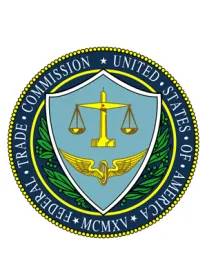"Native" advertising is advertising or sponsored content that "bears a similarity to the news, feature articles, product reviews, entertainment, and other material that surrounds it online." In other words, it looks and feels like other non-advertising or “editorial” content, such that it blends in and may not come across as advertising to viewers. Native ads have become increasingly prevalent given the changing technology allowing consumers to skip or block ads and the corresponding changing business models of publishers.
The Federal Trade Commission (FTC) recently released two highly anticipated documents regarding native advertising, namely, its Enforcement Policy Statement on Deceptively Formatted Advertisements and Native Advertising: A Guide for Businesses. The documents detail FTC's views and enforcement approach to native ads and similar sponsored content.
As explained by FTC, "many publishers have begun to offer advertisers formats and techniques that are closely integrated with and less distinguishable from regular content so that they can capture the attention and clicks of ad-avoiding consumers." According to the FTC guidance, native ads will be considered deceptive "if they convey to consumers expressly or by implication that they're independent, impartial, or from a source other than the sponsoring advertiser – in other words, that they're something other than ads." This is "[b]ecause knowing that something is an ad likely will affect whether consumers choose to interact with it and the weight or credibility consumers give the information it conveys."
FTC reiterates that transparency is key, and that traditional advertising rules apply with equal force in new media, including with for native content. FTC considers the "net impression" of the content, including words, images, audio, and so forth, in deciding whether the content is deceptive. The FTC further emphasized the importance of disclosures being straightforward, and that while terms like "Ad" or "Paid Advertisement" were likely to be understood, "Promoted" or "Promoted Story" are ambiguous and potentially misleading.
Some forms of native ads will require clear and prominent disclosures signaling that the content is indeed paid advertising. The more similar in format and topic the sponsored content is to, and the less it is distinguished from, the non-sponsored content on the site, the more likely that specific disclosure will be necessary. FTC points out that it is also necessary to take into account the target audience of the ad, consumers' ordinary expectations regarding with the type of media in which the ad appears, and how consumers consume content in that media. The FTC's also reminds advertisers to follow the .com Disclosures: How to Make Effective Disclosures in Digital Advertising.
The Guide for Businesses document may be especially helpful in practice, since it contains examples of what may and may not be considered deceptive, and when a disclosure would or would not be required. For example, the Guide addresses thumbnail versions of native content (click-through images to that lead to the full content), abbreviated versions of native content in news feeds and "content recommendation widgets," content integrated into entertainment programming and video games, and, of course, native content on social media.
Finally, FTC made clear that its enforcement policy does not apply only to advertisers, but rather to "everyone who participates directly or indirectly in creating or presenting native ads," including ad agencies and operators of affiliate networks.





 />i
/>i

